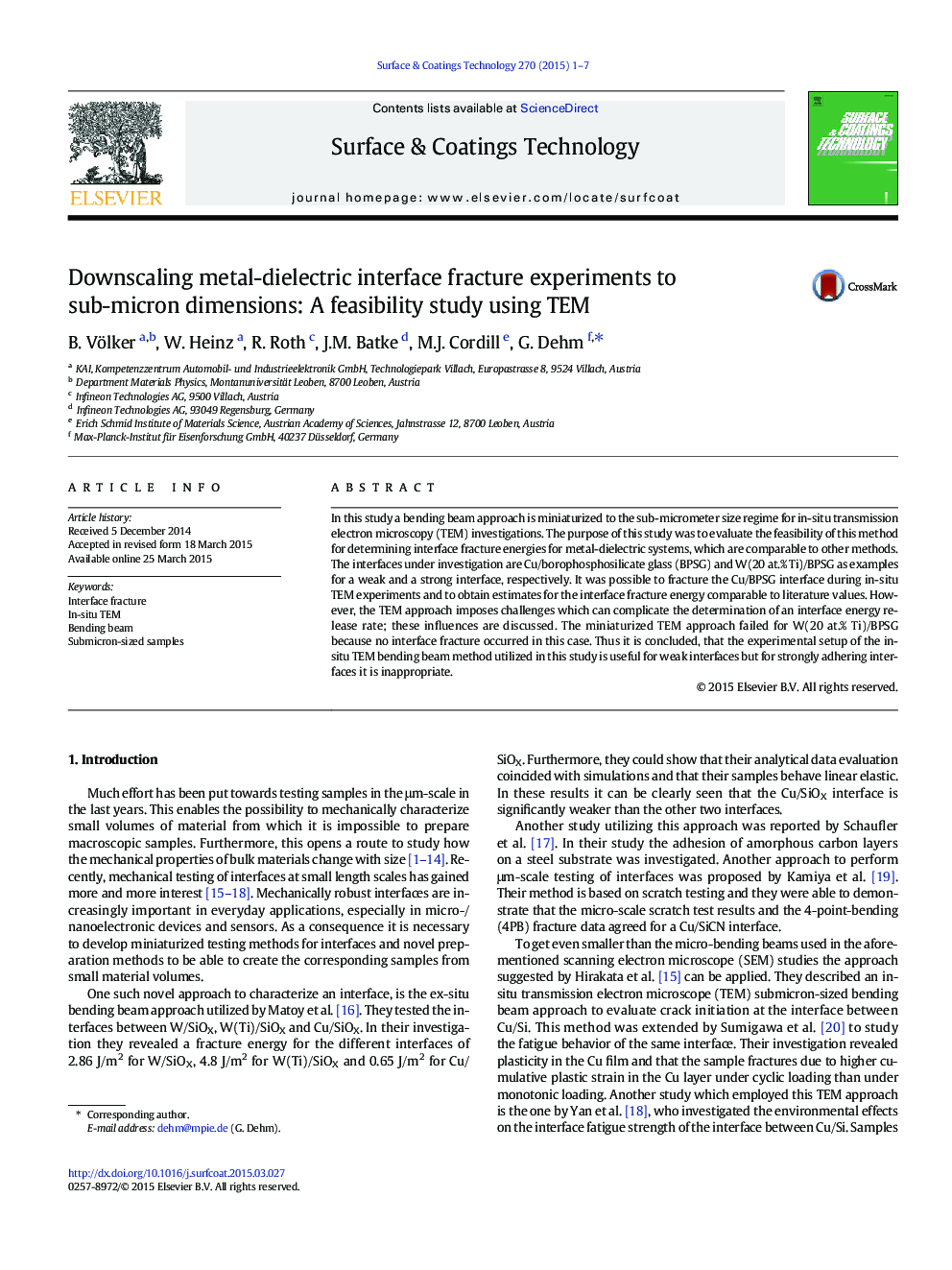| Article ID | Journal | Published Year | Pages | File Type |
|---|---|---|---|---|
| 8026600 | Surface and Coatings Technology | 2015 | 7 Pages |
Abstract
In this study a bending beam approach is miniaturized to the sub-micrometer size regime for in-situ transmission electron microscopy (TEM) investigations. The purpose of this study was to evaluate the feasibility of this method for determining interface fracture energies for metal-dielectric systems, which are comparable to other methods. The interfaces under investigation are Cu/borophosphosilicate glass (BPSG) and W(20Â at.% Ti)/BPSG as examples for a weak and a strong interface, respectively. It was possible to fracture the Cu/BPSG interface during in-situ TEM experiments and to obtain estimates for the interface fracture energy comparable to literature values. However, the TEM approach imposes challenges which can complicate the determination of an interface energy release rate; these influences are discussed. The miniaturized TEM approach failed for W(20Â at.% Ti)/BPSG because no interface fracture occurred in this case. Thus it is concluded, that the experimental setup of the in-situ TEM bending beam method utilized in this study is useful for weak interfaces but for strongly adhering interfaces it is inappropriate.
Related Topics
Physical Sciences and Engineering
Materials Science
Nanotechnology
Authors
B. Völker, W. Heinz, R. Roth, J.M. Batke, M.J. Cordill, G. Dehm,
